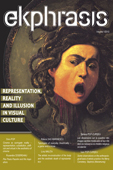CINEMA AS SURROGATE REALITY – REPRESENTATION, SUBSTITUTION, ARTIFICIAL AND VIRTUAL IN THE AESTHETICS OF CINEMA
CINEMA AS SURROGATE REALITY – REPRESENTATION, SUBSTITUTION, ARTIFICIAL AND VIRTUAL IN THE AESTHETICS OF CINEMA
Author(s): Doru PopSubject(s): Theatre, Dance, Performing Arts
Published by: Universitatea Babeş-Bolyai, Facultatea de Teatru si Televiziune
Keywords: Cinematography; representation; surrogates; simulacra; illusion; reality-effect; virtual reality.
Summary/Abstract: From the earliest forms of artistic expression and from the first philosophical debates, the relationship between body and its representations was a constant preoccupation for theoretical discussions. Be it the “tomb for the soul”, as it was for Plato, a mechanism governed by Reason and obeying the rules of the Reason, as it was for Descartes, or, as in the case of the phenomenology of the body, who equates the body with a mirror of the surrounding world, the Western intellectual world has debated the relationship between body and the reality of the world, or between the bodily existence of the world and the (un)Real. One fundamental question that derives from this debate is that of the relationship between humans and non-human beings (mechanical, artificial or imagined) in cinema. Using the correlation from Čapek’s work, who is the “slave” and who is the “master” in this relationship between the represented and the representation, and how does this centuries old debate can be transformed into cinematic art and the theory of cinema? The fundamental question becomes, in terms of cinema theory, what is “real” and what is “illusion” in movies? In this article the basis for interpretation are three movies considered to be selfreflexive and directly addressing the nature of cinema: Solaris by Andrey Tarkovsky, Artificial Intelligence by Steven Spielberg, and Surrogates, by Jonathan Mostow.
Journal: Ekphrasis. Images, Cinema, Theory, Media
- Issue Year: 03/2010
- Issue No: 1
- Page Range: 9-25
- Page Count: 17
- Language: English

